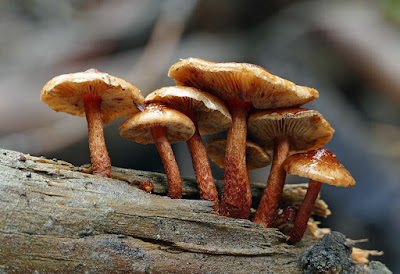You might grow
mushrooms as a hobby, or perhaps you want to reap their nutritional benefits.
Or, you might be interested in making a profit off of mushroom cultivation. And
to achieve this means, you will now need a log and spawns. Using a log has been
in practice for many years and has been hailed as the ideal way to grow rich
and juicy mushrooms. The log is the substrate within which the spawn, the
inoculum, is inoculated into. Seems pretty simple right? It can be, but you
will have to know how to prepare your log first.
Getting the right log
There are a couple
of options when it comes to getting a log for your mushroom spawns. The first
option is acquiring the log of preference manually or commercially, and then
infusing them with the spawns. The second option is to buy a log from a mushroom log
supplier. They usually have the logs inoculated with the spawn of choice
(shiitake, king oyster, black fungus, etc.) and then have it delivered to you.
Using a commercial mushroom log
This option makes
life a lot easier and is especially useful if you are pressed for time. If you
want quick results so you may sell it or consume it faster, then you can opt
for this choice. Mushroom log suppliers
sell a wide variety of mushroom logs, from the type of tree down to the kind of
spawn inoculated into it. You can pick and choose whichever one you like and
how much ever you like. The suppliers will give you instructions on how to take
care of it, how long it will take to fruit, and seasons where it can be
cultivated and harvested.
 |
As a hobbyist, you
might want to make the mushroom log yourself. For creating a mushroom log from
scratch, you would need to acquire a freshly felled log and keep it around for
a couple of days. The tools you require would include a drill, a dowel hammer
or inoculation tool (depending on the spawn), and some sealing wax. In certain
cases, you would need a fruiting blanket and a tarp. If you do not have these
tools, worry not. There are commercial suppliers for mushroom log kits that not
only give you all the tools you need but also provide detailed instructions on
how to use them.
Now, you will want
to acquire a hardwood log instead of softwood, since softwood can act as a
fungicide, and hardwood is far better for producing rich results. Try oak,
birch, maple or beech. Make sure your logs are from healthy trees. Rotting logs
may introduce contaminants and microorganisms that you might interfere with
mushroom growth. You will need to make sure your log is moist. Different logs
have different moisture requirements, but if you live in a rainy area, that
would do nicely as well. Normally, after inoculation, you need to leave it in a
shady, humid place. Make sure you coordinate the log size with the spawn size
and amount.
Hopefully, these
tips have helped you learn more about how to prepare your log for ideal
mushroom fruiting.
















